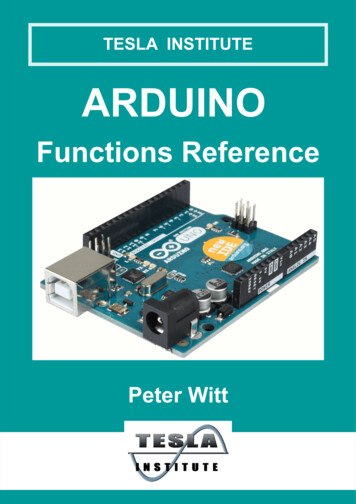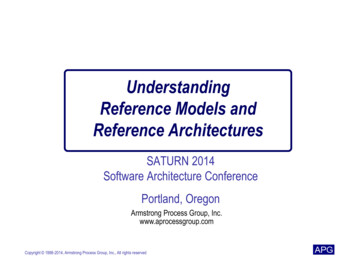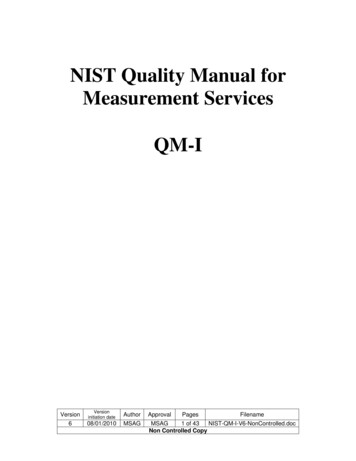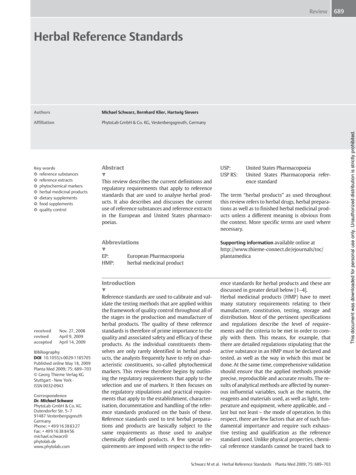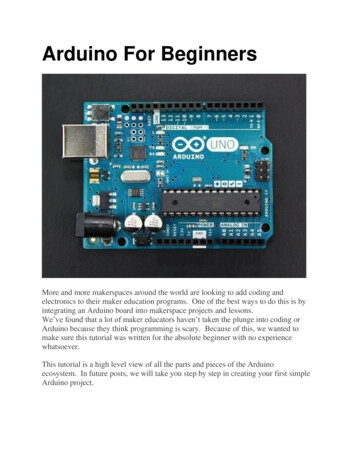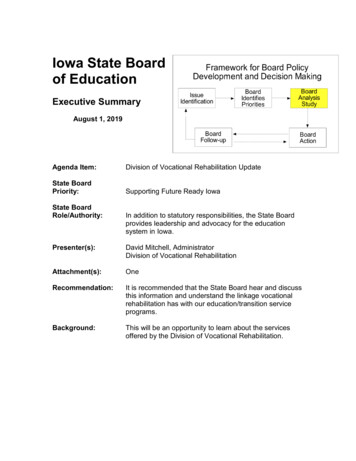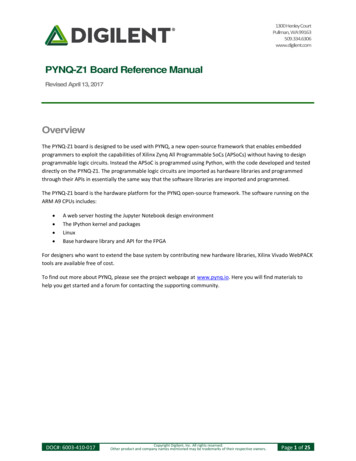
Transcription
1300 Henley CourtPullman, WA 99163509.334.6306www.digilent.comPYNQ-Z1 Board Reference ManualRevised April 13, 2017OverviewThe PYNQ-Z1 board is designed to be used with PYNQ, a new open-source framework that enables embeddedprogrammers to exploit the capabilities of Xilinx Zynq All Programmable SoCs (APSoCs) without having to designprogrammable logic circuits. Instead the APSoC is programmed using Python, with the code developed and testeddirectly on the PYNQ-Z1. The programmable logic circuits are imported as hardware libraries and programmedthrough their APIs in essentially the same way that the software libraries are imported and programmed.The PYNQ-Z1 board is the hardware platform for the PYNQ open-source framework. The software running on theARM A9 CPUs includes: A web server hosting the Jupyter Notebook design environmentThe IPython kernel and packagesLinuxBase hardware library and API for the FPGAFor designers who want to extend the base system by contributing new hardware libraries, Xilinx Vivado WebPACKtools are available free of cost.To find out more about PYNQ, please see the project webpage at www.pynq.io. Here you will find materials tohelp you get started and a forum for contacting the supporting community.DOC#: 6003-410-017Copyright Digilent, Inc. All rights reserved.Other product and company names mentioned may be trademarks of their respective owners.Page 1 of 25
PYNQ-Z1 Board Reference Manual The PYNQ-Z1. Memoryo 512MB DDR3 with 16-bit bus @1050Mbpso 16MB Quad-SPI Flash with factoryprogrammed 48-bit globally uniqueEUI-48/64 compatible identifiero microSD slotUSB and Etherneto Gigabit Ethernet PHYo USB-JTAG Programming circuitryo USB-UART bridgeo USB OTG PHY (supports host only)Audio and Videoo HDMI sink port (input)o HDMI source port (output)o Microphone with PDM interfaceo PWM driven mono audio output with3.5mm jack ZYNQ XC7Z020-1CLG400Co 650MHz dual-core Cortex-A9 processoro DDR3 memory controller with 8 DMAchannels and 4 High Performance AXI3Slave portso High-bandwidth peripheral controllers: 1GEthernet, USB 2.0, SDIOo Low-bandwidth peripheral controller: SPI,UART, CAN, I2Co Programmable from JTAG, Quad-SPI flash,and microSD cardo Programmable logic equivalent to Artix-7FPGA 13,300 logic slices, each with four6-input LUTs and 8 flip-flops 630 KB of fast block RAM 4 clock management tiles, eachwith a phase-locked loop (PLL) andmixed-mode clock manager(MMCM) 220 DSP slices On-chip analog-to-digitalconverter (XADC)Switches, Push-buttons, and LEDso 4 push-buttonso 2 slide switcheso 4 LEDso 2 RGB LEDsExpansion Connectorso Two standard Pmod ports 16 Total FPGA I/Oo Arduino/chipKIT Shield connector 49 Total FPGA I/O 6 Single-ended 0-3.3V Analoginputs to XADC 4 Differential 0-1.0V Analog inputsto XADCPowero Powered from USB or any 7V-15V externalpower sourceThe board can be purchased stand-alone or with an accessory kit that contains a 12V/3A power adapter, 10 footEthernet cable, USB A to Micro-B cable, and an 8GB, speed class 10 microSD card loaded with the PYNQ image isavailable. For more information on purchasing, see the PYNQ Product Page.1Power SuppliesThe PYNQ-Z1 can be powered from the Digilent USB-JTAG-UART port (J14) or from some other type of powersource such as a battery or external power supply. Jumper JP5 (near the power switch) determines which powersource is used.Copyright Digilent, Inc. All rights reserved.Other product and company names mentioned may be trademarks of their respective owners.Page 2 of 25
PYNQ-Z1 Board Reference ManualA USB 2.0 port can deliver maximum 0.5A of current according to the specifications. This should provide enoughpower for lower complexity designs. More demanding applications, including any that drive multiple peripheralboards or other USB devices, might require more power than the USB port can provide. In this case, powerconsumption will increase until it’s limited by the USB host. This limit varies a lot between manufacturers of hostcomputers and depends on many factors. When in current limit, once the voltage rails dip below their nominalvalue, the Zynq is reset by the Power-on Reset signal and power consumption returns to its idle value. Also, someapplications may need to run without being connected to a PC’s USB port. In these instances an external powersupply or battery can be used.An external power supply (e.g. wall wart) can be used by plugging it into the power jack (J18) and setting jumperJP5 to “REG”. The supply must use a coax, center-positive 2.1mm internal-diameter plug, and deliver 7VDC to15VDC. Suitable supplies can be purchased from the Digilent website or through catalog vendors like DigiKey.Power supply voltages above 15VDC might cause permanent damage. A suitable external power supply is includedwith the PYNQ-Z1 accessory kit.Similar to using an external power supply, a battery can be used to power the PYNQ-Z1 by attaching it to the shieldconnector and setting jumper JP5 to “REG”. The positive terminal of the battery must be connected to the pinlabeled “VIN” on J7, and the negative terminal must be connected to the pin labeled GND on J7.The on-board Texas Instruments TPS65400 PMU creates the required 3.3V, 1.8V, 1.5V, and 1.0V supplies from themain power input. Table 1.1 provides additional information (typical currents depend strongly on Zynqconfiguration and the values provided are typical of medium size/speed designs).All on-board power supplies are enabled or disabled by the power switch SW4. The power indicator LED (LD13) ison when all the supply rails reach their nominal voltage.SupplyCircuitsCurrent (max/typical)3.3VFPGA I/O, USB ports, Clocks, Ethernet, SD slot, Flash, HDMI1.6A/0.1A to 1.5A1.0VFPGA, Ethernet Core2.6A/0.2A to 2.1A1.5VDDR31.8A/0.1A to 1.2A1.8VFPGA Auxiliary, Ethernet I/O, USB Controller1.8A/0.1A to 0.6ATable 1.1. PYNQ-Z1 power supplies.2Zynq APSoC ArchitectureThe Zynq APSoC is divided into two distinct subsystems: The Processing System (PS) and the Programmable Logic(PL). Figure 2.1 shows an overview of the Zynq APSoC architecture, with the PS colored light green and the PL inyellow. Note that the PCIe Gen2 controller and Multi-gigabit transceivers are not available on the Zynq-7020device.Copyright Digilent, Inc. All rights reserved.Other product and company names mentioned may be trademarks of their respective owners.Page 3 of 25
PYNQ-Z1 Board Reference ManualFigure 2.1. Zynq APSoC architecture.The PL is nearly identical to a Xilinx 7-series Artix FPGA, except that it contains several dedicated ports and busesthat tightly couple it to the PS. The PL also does not contain the same configuration hardware as a typical 7-seriesFPGA, and it must be configured either directly by the processor or via the JTAG port.The PS consists of many components, including the Application Processing Unit (APU, which includes 2 Cortex-A9processors), Advanced Microcontroller Bus Architecture (AMBA) Interconnect, DDR3 Memory controller, andvarious peripheral controllers with their inputs and outputs multiplexed to 54 dedicated pins (called MultiplexedI/O, or MIO pins). Peripheral controllers that do not have their inputs and outputs connected to MIO pins caninstead route their I/O through the PL, via the Extended-MIO (EMIO) interface. The peripheral controllers areconnected to the processors as slaves via the AMBA interconnect, and contain readable/writable control registersthat are addressable in the processors’ memory space. The programmable logic is also connected to theinterconnect as a slave, and designs can implement multiple cores in the FPGA fabric that each also containaddressable control registers. Furthermore, cores implemented in the PL can trigger interrupts to the processors(connections not shown in Fig. 3) and perform DMA accesses to DDR3 memory.There are many aspects of the Zynq APSoC architecture that are beyond the scope of this document. For acomplete and thorough description, refer to the Zynq Technical Reference manual.Copyright Digilent, Inc. All rights reserved.Other product and company names mentioned may be trademarks of their respective owners.Page 4 of 25
PYNQ-Z1 Board Reference ManualTable 2.1 depicts the external components connected to the MIO pins of the PYNQ-Z1. The Zynq Presets File foundon the PYNQ-Z1 Resource Center can be imported into EDK and Vivado Designs to properly configure the PS towork with these peripherals.MIO 500 3.3 VPin0 (N/C)1234567 (N/C)8910111213 (N/C)1415PeripheralsENET 0SPI FlashUSB 0ShieldUART 0CSDQ0DQ1DQ2DQ3SCLKSLCK FBEthernet ResetEthernet InterruptUSB Over CurrentShield ResetUART InputUART OutputMIO 501 738PeripheralsENET LUSB 0SDIO pyright Digilent, Inc. All rights reserved.Other product and company names mentioned may be trademarks of their respective owners.Page 5 of 25
PYNQ-Z1 Board Reference ManualMIO 501 1.8VPin39404142434445464748 (N/C)49 (N/C)50 (N/C)51 (N/C)52PeripheralsENET 053MDIOUSB 0DATA7SDIO 0CCLKCMDD0D1D2D3RESETNCDMDCTable 2.1. MIO Pinout.3Zynq ConfigurationUnlike Xilinx FPGA devices, APSoC devices such as the Zynq-7020 are designed around the processor, which acts asa master to the programmable logic fabric and all other on-chip peripherals in the processing system. This causesthe Zynq boot process to be more similar to that of a microcontroller than an FPGA. This process involves theprocessor loading and executing a Zynq Boot Image, which includes a First Stage Bootloader (FSBL), a bitstream forconfiguring the programmable logic (optional), and a user application. The boot process is broken into threestages:Stage 0After the PYNQ-Z1 is powered on or the Zynq is reset (in software or by pressing SRST), one of the processors(CPU0) begins executing an internal piece of read-only code called the BootROM. If and only if the Zynq was justpowered on, the BootROM will first latch the state of the mode pins into the mode register (the mode pins areattached to JP4 on the PYNQ-Z1). If the BootROM is being executed due to a reset event, then the mode pins arenot latched, and the previous state of the mode register is used. This means that the PYNQ-Z1 needs a power cycleto register any change in the programming mode jumper (JP4). Next, the BootROM copies an FSBL from the formof non-volatile memory specified by the mode register to the 256 KB of internal RAM within the APU (called OnChip Memory, or OCM). The FSBL must be wrapped up in a Zynq Boot Image in order for the BootROM to properlycopy it. The last thing the BootROM does is hand off execution to the FSBL in OCM.Stage 1During this stage, the FSBL first finishes configuring the PS components, such as the DDR memory controller. Then,if a bitstream is present in the Zynq Boot Image, it is read and used to configure the PL. Finally, the user applicationis loaded into memory from the Zynq Boot Image, and execution is handed off to it.Copyright Digilent, Inc. All rights reserved.Other product and company names mentioned may be trademarks of their respective owners.Page 6 of 25
PYNQ-Z1 Board Reference ManualStage 2The last stage is the execution of the user application that was loaded by the FSBL. This can be any sort of program,from a simple “Hello World” design, to a Second Stage Boot loader used to boot an operating system like Linux. Fora more thorough explanation of the boot process, refer to Chapter 6 of the Zynq Technical Reference manual.The Zynq Boot Image is created using Vivado and Xilinx Software Development Kit (Xilinx SDK). For information oncreating this image please refer to the available Xilinx documentation for these tools.The PYNQ-Z1 supports three different boot modes: microSD, Quad SPI Flash, and JTAG. The boot mode is selectedusing the Mode jumper (JP4), which affects the state of the Zynq configuration pins after power-on. Figure 3.1depicts how the Zynq configuration pins are connected on the PYNQ-Z1.Figure 3.1. PYNQ-Z1 configuration pins.The three boot modes are described in the following sections.3.1microSD Boot ModeThe PYNQ-Z1 supports booting from a microSD card inserted into connector J9. The following procedure will allowyou to boot the Zynq from microSD with a standard Zynq Boot Image created with the Xilinx tools:1.2.3.4.5.6.7.Format the microSD card with a FAT32 file system.Copy the Zynq Boot Image created with Xilinx SDK to the microSD card.Rename the Zynq Boot Image on the microSD card to BOOT.bin.Eject the microSD card from your computer and insert it into connector J9 on the PYNQ-Z1.Attach a power source to the PYNQ-Z1 and select it using JP5.Place a single jumper on JP4, shorting the two top pins (labeled “SD”).Turn the board on. The board will now boot the image on the microSD card.In order to boot the PYNQ-Z1 into the PYNQ software environment, the microSD card must be formatted with aspecially created disk image. Refer to www.pynq.io for instructions on obtaining this image file and flashing it to amicroSD card. Once the microSD card has been flashed with the image, the PYNQ-Z1 can be booted with it byfollowing the instructions above starting at step 4.Copyright Digilent, Inc. All rights reserved.Other product and company names mentioned may be trademarks of their respective owners.Page 7 of 25
PYNQ-Z1 Board Reference Manual3.2Quad SPI Boot ModeThe PYNQ-Z1 has an onboard 16MB Quad-SPI Flash that the Zynq can boot from. Documentation available fromXilinx describes how to use Xilinx SDK to program a Zynq Boot Image into a Flash device attached to the Zynq. Oncethe Quad SPI Flash has been loaded with a Zynq Boot Image, the following steps can be followed to boot from it:1.2.3.3.3Attach a power source to the PYNQ-Z1 and select it using JP5.Place a single jumper on JP4, shorting the two center pins (labeled “QSPI”).Turn the board on. The board will now boot the image stored in the Quad SPI flash.JTAG Boot ModeWhen placed in JTAG boot mode, the processor will wait until software is loaded by a host computer using theXilinx tools. After software has been loaded, it is possible to either let the software begin executing, or stepthrough it line by line using Xilinx SDK.It is also possible to directly configure the PL over JTAG, independent of the processor. This can be done using theVivado Hardware Server.The PYNQ-Z1 is configured to boot in Cascaded JTAG mode, which allows the PS to be accessed via the same JTAGport as the PL. It is also possible to boot the PYNQ-Z1 in Independent JTAG mode by loading a jumper in JP2 andshorting it. This will cause the PS to not be accessible from the onboard JTAG circuitry, and only the PL will bevisible in the scan chain. To access the PS over JTAG while in independent JTAG mode, users will have to route thesignals for the PJTAG peripheral over EMIO, and use an external device to communicate with it.4Quad SPI FlashThe PYNQ-Z1 features a Quad SPI serial NOR flash. The Spansion S25FL128S is used on this board. The Multi-I/O SPIFlash memory is used to provide non-volatile code and data storage. It can be used to initialize the PS subsystem aswell as configure the PL subsystem.The relevant device attributes are: 16 MBx1, x2, and x4 supportBus speeds up to 104 MHz, supporting Zynq configuration rates @ 100 MHz. In Quad SPI mode, thistranslates to 400MbsPowered from 3.3VThe SPI Flash connects to the Zynq-7000 APSoC and supports the Quad SPI interface. This requires connection tospecific pins in MIO Bank 0/500, specifically MIO[1:6,8] as outlined in the Zynq datasheet. Quad-SPI feedback modeis used, thus qspi sclk fb out/MIO[8] is left to freely toggle and is connected only to a 20K pull-up resistor to 3.3V.This allows a Quad SPI clock frequency greater than FQSPICLK2 (See the Zynq Technical Reference manual for moreon this).Copyright Digilent, Inc. All rights reserved.Other product and company names mentioned may be trademarks of their respective owners.Page 8 of 25
PYNQ-Z1 Board Reference Manual5DDR MemoryThe PYNQ-Z1 includes an IS43TR16256A-125KBL DDR3 memory components creating a single rank, 16-bit wideinterface and a total of 512MiB of capacity. The DDR3 is connected to the hard memory controller in the ProcessorSubsystem (PS), as outlined in the Zynq documentation.The PS incorporates an AXI memory port interface, a DDR controller, the associated PHY, and a dedicated I/O bank.DDR3 memory interface speeds up to 533 MHz/1066 Mbps are supported.1PYNQ-Z1 was routed with 40 ohm ( /-10%) trace impedance for single-ended signals, and differential clock andstrobes set to 80 ohms ( /-10%). A feature called DCI (Digitally Controlled Impedance) is used to match the drivestrength and termination impedance of the PS pins to the trace impedance. On the memory side, each chipcalibrates its on-die termination and drive strength using a 240-ohm resistor on the ZQ pin.Due to layout reasons, the two data byte groups (DQ[0-7], DQ[8-15]) were swapped. To the same effect, the databits inside byte groups were swapped as well. These changes are transparent to the user. During the whole designprocess the Xilinx PCB guidelines were followed.Both the memory chips and the PS DDR bank are powered from the 1.5V supply. The mid-point reference of 0.75Vis created with a simple resistor divider and is available to the Zynq as external reference.For proper operation, it is essential that the PS memory controller is configured properly. Settings range from theactual memory flavor to the board trace delays. For your convenience, the Zynq presets file for the PYNQ-Z1 isprovided on the resource center and automatically configures the Zynq Processing System IP core with the correctparameters.For best DDR3 performance, DRAM training is enabled for write leveling, read gate, and read data eye options inthe PS Configuration Tool in Xilinx tools. Training is done dynamically by the controller to account for board delays,process variations and thermal drift. Optimum starting values for the training process are the board delays(propagation delays) for certain memory signals.Board delays are specified for each of the byte groups. These parameters are board-specific and were calculatedfrom the PCB trace length reports. The DQS to CLK Delay and Board Delay values are calculated specific to thePYNQ-Z1 memory interface PCB design.For more details on memory controller operation, refer to the Xilinx Zynq Technical Reference manual.6USB UART Bridge (Serial Port)The PYNQ-Z1 includes an FTDI FT2232HQ USB-UART bridge (attached to connector J14) that lets you use PCapplications to communicate with the board using standard COM port commands (or the tty interface in Linux).Drivers are automatically installed in Windows and newer versions of Linux. Serial port data is exchanged with theZynq using a two-wire serial port (TXD/RXD). After the drivers are installed, I/O commands can be used from the PCdirected to the COM port to produce serial data traffic on the Zynq pins. The port is tied to PS (MIO) pins and canbe used in combination with the UART 0 controller.1Maximum actual clock frequency is 525 MHz on the PYNQ-Z1 due to PLL limitation.Copyright Digilent, Inc. All rights reserved.Other product and company names mentioned may be trademarks of their respective owners.Page 9 of 25
PYNQ-Z1 Board Reference ManualThe Zynq presets file (available in the PYNQ-Z1 Resource Center) takes care of mapping the correct MIO pins to theUART 0 controller and uses the following default protocol parameters: 115200 baud rate, 1 stop bit, no parity, 8-bitcharacter length.Two on-board status LEDs provide visual feedback on traffic flowing through the port: the transmit LED(LD11) andthe receive LED (LD10). Signal names that imply direction are from the point-of-view of the DTE (Data TerminalEquipment), in this case the PC.The FT2232HQ is also used as the controller for the Digilent USB-JTAG circuitry, but the USB-UART and USB-JTAGfunctions behave entirely independent of one another. Programmers interested in using the UART functionality ofthe FT2232 within their design do not need to worry about the JTAG circuitry interfering with the UART datatransfers, and vice-versa. The combination of these two features into a single device allows the PYNQ-Z1 to beprogrammed, communicated with via UART, and powered from a computer attached with a single Micro USBcable.The DTR signal from the UART controller on the FT2232HQ is connected to MIO12 of the Zynq device via JP1.Should the Arduino IDE be ported to work with the PYNQ-Z1, this jumper can be shorted and MIO12 could be usedto place the PYNQ-Z1 in a “ready to receive a new sketch” state. This would mimic the behavior of typical ArduinoIDE boot-loaders.7microSD SlotThe PYNQ-Z1 provides a microSD slot (J9) for non-volatile external memory storage as well as booting the Zynq.The slot is wired to Bank 1/501 MIO[40-47], including Card Detect. On the PS side peripheral SDIO 0 is mapped outto these pins and controls communication with the SD card. The pinout can be seen in Table 7.1. The peripheralcontroller supports 1-bit and 4-bit SD transfer modes, but does not support SPI mode. Based on the Zynq TechnicalReference manual, SDIO host mode is the only mode supported.Signal NameSD D0SD D1SD D2SD D3SD CCLKSD CMDSD andCard DetectZynq PinMIO42MIO43MIO44MIO45MIO40MIO41MIO47SD Slot Pin7812539Table 7.1. microSD pinout.The SD slot is a powered from 3.3V, but is connected through MIO Bank 1/501 (1.8V). Therefore, a TI TXS02612level shifter performs this translation. The TXS02612 is actually 2-port SDIO port expander, but only its level shifterfunction is used. The connection diagram can be seen on Figure 7.1. Mapping out the correct pins and configuringthe interface is handled by the PYNQ-Z1 Zynq presets file, available on the PYNQ-Z1 Resource Center.Copyright Digilent, Inc. All rights reserved.Other product and company names mentioned may be trademarks of their respective owners.Page 10 of 25
PYNQ-Z1 Board Reference ManualFigure 7.1. microSD slot signals.Both low speed and high speed cards are supported, the maximum clock frequency being 50 MHz. A Class 4 cardor better is recommended.Refer to section 3.1 for information on how to boot from an SD card. For more information, consult the ZynqTechnical Reference manual.8USB HostThe PYNQ-Z1 implements one of the two available PS USB OTG interfaces on the Zynq device. A MicrochipUSB3320 USB 2.0 Transceiver Chip with an 8-bit ULPI interface is used as the PHY. The PHY features a complete HSUSB Physical Front-End supporting speeds of up to 480Mbs. The PHY is connected to MIO Bank 1/501, which ispowered at 1.8V. The usb0 peripheral is used on the PS, connected through MIO[28-39]. The USB OTG interface isconfigured to act as an embedded host. USB OTG and USB device modes are not supported.The PYNQ-Z1 is technically an “embedded host”, because it does not provide the required 150 µF of capacitanceon VBUS required to qualify as a general purpose host. It is possible to modify the PYNQ-Z1 so that it complies withthe general purpose USB host requirements by loading C41 with a 150 µF capacitor. Only those experienced atsoldering small components on PCBs should attempt this rework. Many USB peripheral devices will work just finewithout loading C41. Whether the PYNQ-Z1 is configured as an embedded host or a general purpose host, it canprovide 500 mA on the 5V VBUS line. Note that loading C41 may cause the PYNQ-Z1 to reset when bootingembedded Linux while powered from the USB port, regardless of if any USB device is connected to the host port.This is caused by the in-rush current that C41 causes when the USB host controller is enabled and the VBUS powerswitch (IC9) is turned on.Note that if your design uses the USB Host port (embedded or general purpose), then the PYNQ-Z1 should bepowered via a battery or wall adapter capable of providing more power (such as the one included in the PYNQ-Z1accessory kit).Copyright Digilent, Inc. All rights reserved.Other product and company names mentioned may be trademarks of their respective owners.Page 11 of 25
PYNQ-Z1 Board Reference Manual9Ethernet PHYThe PYNQ-Z1 uses a Realtek RTL8211E-VL PHY to implement a 10/100/1000 Ethernet port for network connection.The PHY connects to MIO Bank 501 (1.8V) and interfaces to the Zynq-7000 APSoC via RGMII for data and MDIO formanagement. The auxiliary interrupt (INTB) and reset (PHYRSTB) signals connect to MIO pins MIO10 and MIO9,respectively.Figure 9.1. Ethernet PHY signals.After power-up the PHY starts with Auto Negotiation enabled, advertising 10/100/1000 link speeds and full duplex.If there is an Ethernet-capable partner connected, the PHY automatically establishes a link with it, even with theZynq not configured.Two status indicator LEDs are on-board near the RJ-45 connector that indicate traffic (LD9) and valid link state(LD8). Table 9.1 shows the default king 0.4s ON, 2s OFFBlinkingDescriptionLink 10/100/1000Link, Energy Efficient Ethernet (EEE) modeTransmitting or ReceivingTable 9.1. Ethernet status LEDs.The Zynq incorporates two independent Gigabit Ethernet Controllers. They implement a 10/100/1000 half/fullduplex Ethernet MAC. Of these two, GEM 0 can be mapped to the MIO pins where the PHY is connected. Since theMIO bank is powered from 1.8V, the RGMII interface uses 1.8V HSTL Class 1 drivers. For this I/O standard anexternal reference of 0.9V is provided in bank 501 (PS MIO VREF). Mapping out the correct pins and configuringthe interface is handled by the PYNQ-Z1 Zynq Presets file, available on the PYNQ-Z1 Resource Center.Copyright Digilent, Inc. All rights reserved.Other product and company names mentioned may be trademarks of their respective owners.Page 12 of 25
PYNQ-Z1 Board Reference ManualAlthough the default power-up configuration of the PHY might be enough in most applications, the MDIO bus isavailable for management. The RTL8211E-VL is assigned the 5-bit address 00001 on the MDIO bus. With simpleregister read and write commands, status information can be read out or configuration changed. The Realtek PHYfollows industry-standard register map for basic configuration.The RGMII specification calls for the receive (RXC) and transmit clock (TXC) to be delayed relative to the datasignals (RXD[0:3], RXCTL and TXD[0:3], TXCTL). Xilinx PCB guidelines also require this delay to be added. TheRTL8211E-VL is capable of inserting a 2ns delay on both the TXC and RXC so that board traces do not need to bemade longer.The PHY is clocked from the same 50 MHz oscillator that clocks the Zynq PS. The parasitic capacitance of the twoloads is low enough to be driven from a single source.On an Ethernet network each node needs a unique MAC address. To this end, the one-time-programmable (OTP)region of the Quad-SPI flash has been programmed at the factory with a 48-bit globally unique EUI-48/64 compatible identifier. The OTP address range [0x20;0x25] contains the identifier with the first byte in transmissionbyte order being at the lowest address. Refer to the Flash memory datasheet for information on how to access theOTP regions. When using the PYNQ software, this is automatically handled in the boot-loader, and the Linuxsystem is automatically configured to use this unique MAC address.For more information on using the Gigabit Ethernet MAC, refer to the Zynq Technical Reference manual.10HDMIThe PYNQ-Z1 contains two unbuffered HDMI ports: one source port J11 (output), and one sink port J10 (input).Both ports use HDMI type-A receptacles with the data and clock signals terminated and connected directly to theZynq PL.Both HDMI and DVI systems use the same TMDS signaling standard, directly supported by Zynq PL's user I/Oinfrastructure. Also, HDMI sources are backward compatible with DVI sinks, and vice versa. Thus, simple passiveadaptors (available at most electronics stores) can be used to drive a DVI monitor or accept a DVI input. The HDMIreceptacle only includes digital signals, so only DVI-D mode is possible.The 19-pin HDMI connectors include three differential data channels, one differential clock channelfive GND connections, a one-wire Consumer Electronics Control (CEC) bus, a two-wire Display Data Channel (DDC)bus that is essentially an I2C bus, a Hot Plug Detect (HPD) signal, a 5V signal capable of delivering up to 50mA, andone reserved (RES) pin. All non-power signals are wired to the Zynq PL with the exception of RES.Pin/SignalD[2] P,D[2] ND[1] P,D[1] ND[0] P,D[0] NCLK P, CLK NCECJ11 (source)DescriptionFPGA pinJ10 (sink)DescriptionFPGA pinData outputJ18, H18Data inputN20, P20Data outputK19, J19Data inputT20, U20Data outputK17, K18Data inputClock outputConsumer Electronics ControlbidirectionalL16, L17Clock inputConsumer Electronics ControlbidirectionalG15Copyright Digilent, Inc. All rights reserved.Other product and company names mentioned may be trademarks of their respective owners.V20,W20N18, P19H17Page 13 of 25
PYNQ-Z1 Board Reference ManualPin/SignalSCL, SDAHPD/HPAJ11 (source)DescriptionDDC bidirectionalHot-plug detect input (inverted)FPGA pinM17, M18R19J10 (sink)DescriptionDDC bidirectionalHot-plug assert outputFPGA pinU14, U15T19Table 10.1. HDMI pin description and assignment.10.1 TMDS SignalsHDMI/DVI is a high-speed digital video stream interface using transition-minimized differential signaling (TMDS).To make proper use of either of the HDMI ports, a standard-compliant transmitter or receiver needs to beimplemented in the Zynq PL. The implementation details are outside the scope of this manual. Check out thevivado-library IP Core repository on the Digilent github for ready-to-use reference IP.10.2 Auxiliary signalsWhenever a sink is ready and wishes to announce its presence, it connects the 5V0 supply pin to the HPD pin. Onthe PYNQ-Z1, this is done by driving the Hot Plug Asser
The Zynq APSoC is divided into two distinct subsystems: The Processing System (PS) and the Programmable Logic (PL). Figure 2.1 shows an overview of the Zynq APSoC architecture, with the PS colored light green and the PL in yellow. Note that the PCIe Gen2 controller and Multi-gigabit transceivers are not available on the Zynq-7020 device.
